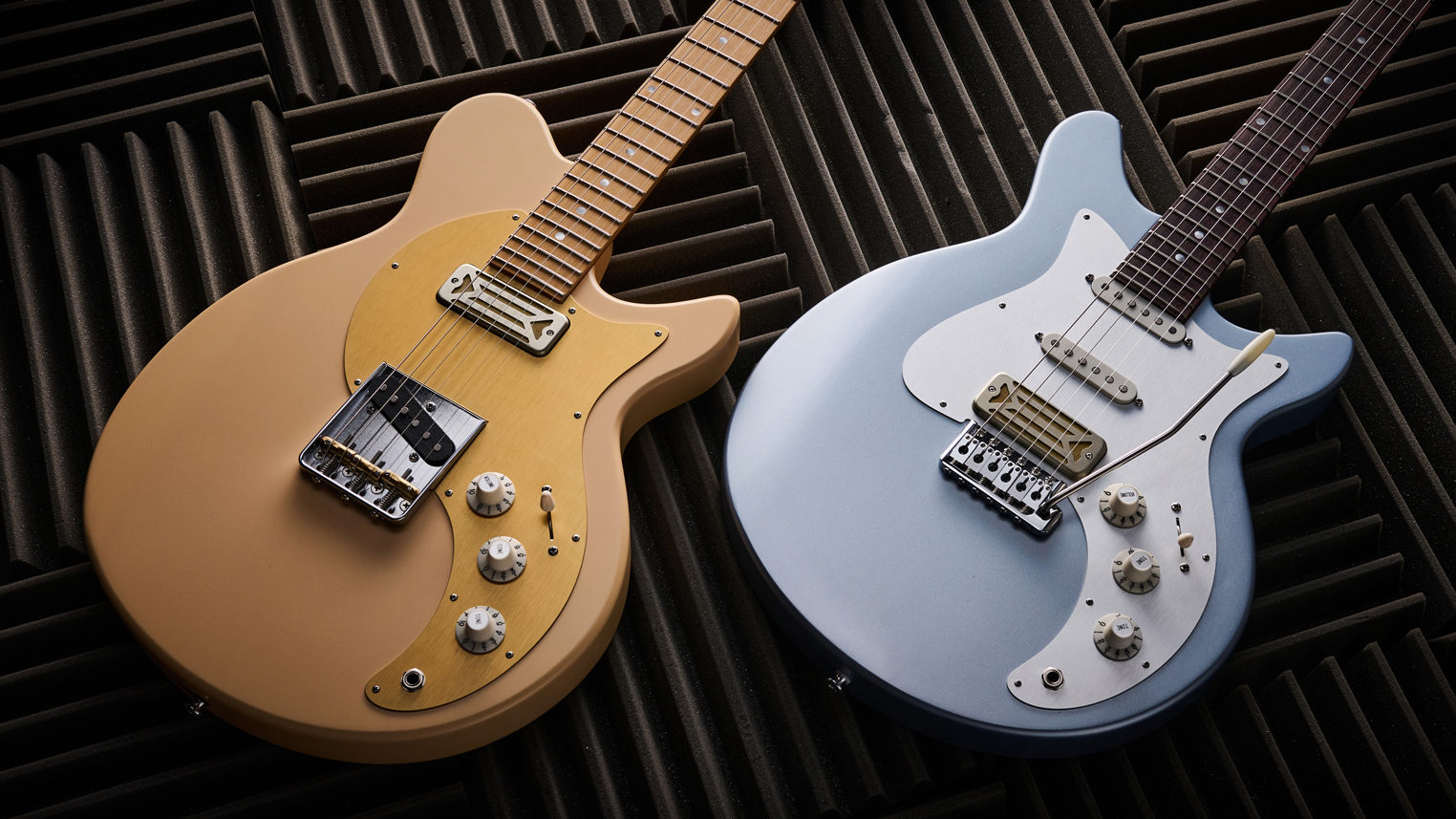
What is it?
Eastman is one of the few brands we can think of that, having built its empire on heavily inspired-by designs, has turned its back on those to create a new, original path.
Yes, many of those older designs are still in the catalogue, but the new-design wave began with the Romeo, in 2019, an original thinline that nodded back to the jazz age but moves effortlessly into ’60s style with models such as the Romeo LA.
Juliet followed in 2022, rather rockier with a raised-centre solidbody and a single-cut outline that shares a strong family resemblance to Romeo. These models achieved the often difficult balance of being original in style but seemingly rooted in the past.
Primarily designed by Otto D’Ambrosio, who heads up Eastman’s LA custom shop, these new creations were joined in 2024 by his eponymous series, which expanded on the Juliet outline with a trio of designs: DC (double-cut), SC (single-cut) and Offset – made in the USA, not Beijing, China.
Very much California boutique in quality and style with prices to match, it was only a matter of time before the ‘D’Ambrosio for the people’ was introduced. Earlier this year a pair of Chinese-made FullerTone models joined the increasingly expansive Eastman electric guitar line-up, named after the unique neck joint of the D’Ambrosio series with a nod to Fullerton where the Fender story started, around 20 miles away from Pomona where Eastman USA is based.
At under a quarter of the price of the USA D’Ambrosio models, these FullerTones might lack some of the upmarket details, but both new models still come across as very inspired and original takes on the primarily Fender recipe, which starts with that longer 648mm (25.5inch) scale length.
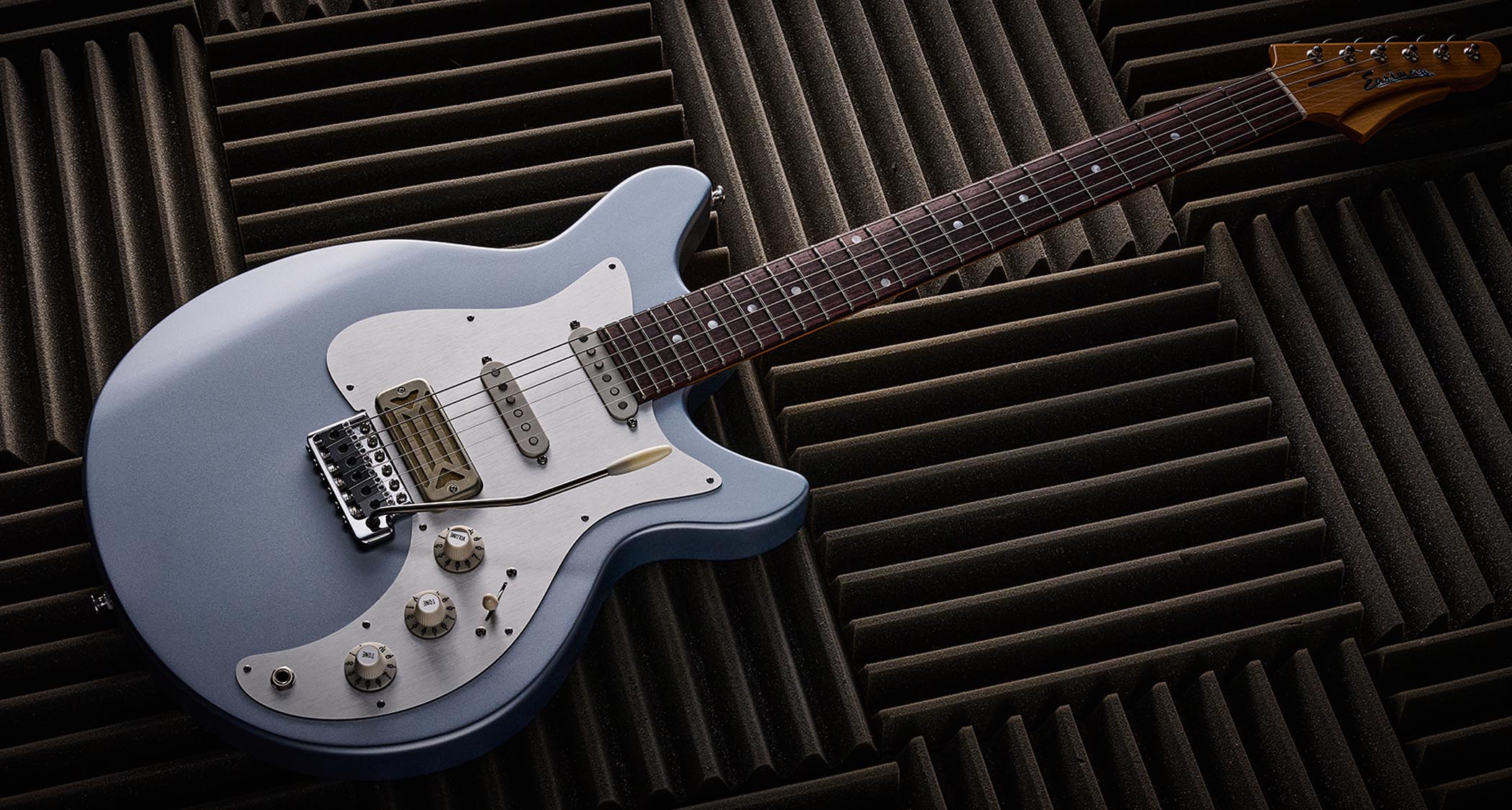
The first major change, however, is the body wood, which – while hidden from view under the opaque satin finishes – is spec’d as roasted black limba. Limba is also known as korina, and it’s the wood with darker figuring that’s known as the black variant; if it’s lighter, it’s called white. It’s Fender-standard at 45mm thick with quite a shallow and straight forearm contour and a more pronounced cutaway on the rear.
The outlines are virtually identical. The SC seems close to the Juliet, albeit with more rounded lower bouts, and its bass-side shoulder is fuller, joining the neck at the 16th fret; the DC joins at the 18th.
But like the original D’Ambrosio models, both are 24-fretters, so although it looks like the neck sits into the body slightly more than a Telecaster, the curve of the cutaway actually lines up with the same 21st/22nd fret. Less obvious until you look is the more pointed heel on the DC.
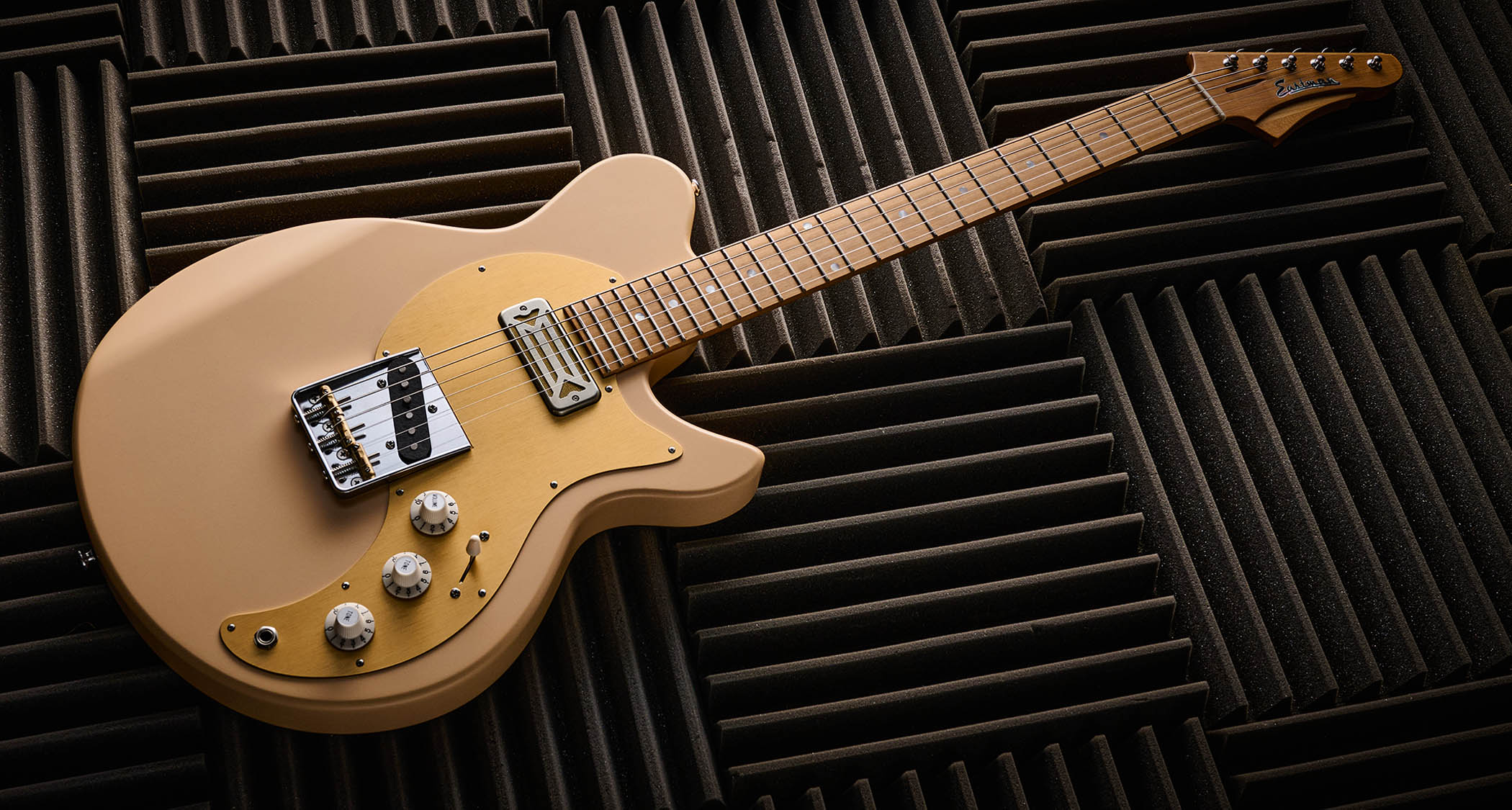
While the neck-to-body join is unique, at the other end of the neck is the stylised six-in-a-line headstock, which is back-angled so string trees are unnecessary. Here, the main shaft is near perfectly quarter-sawn roasted maple, the lower tips of the headstock are additional pieces, plus the raised main section of the headstock is actually a thick, nearly 3mm facing.
The access to the dual-action truss rod (the D’Ambrosio models use a single-action rod) is via that long open hole between the G and D strings, and a large L-shaped Allen key is included for any adjustments. The headstock here isn’t quite as exotic-looking as the pukka D’Ambrosio models, but it ties in with the family, which, of course, includes the Juliet series models.
The Moss Black and Ice Blue Metallic finishes come with a ‘silver’ anodised aluminium scratchplate; the Desert Sand model uses the same material, but it’s gold coloured. The shapes vary on the bass side and, of course, for the different pickup complements.
On the SC ’52, only the controls, switch and output jack are suspended on the ’plate as the neck pickup direct-mounts to the body and the bridge pickup is mounted within the Tele-style bridge plate.
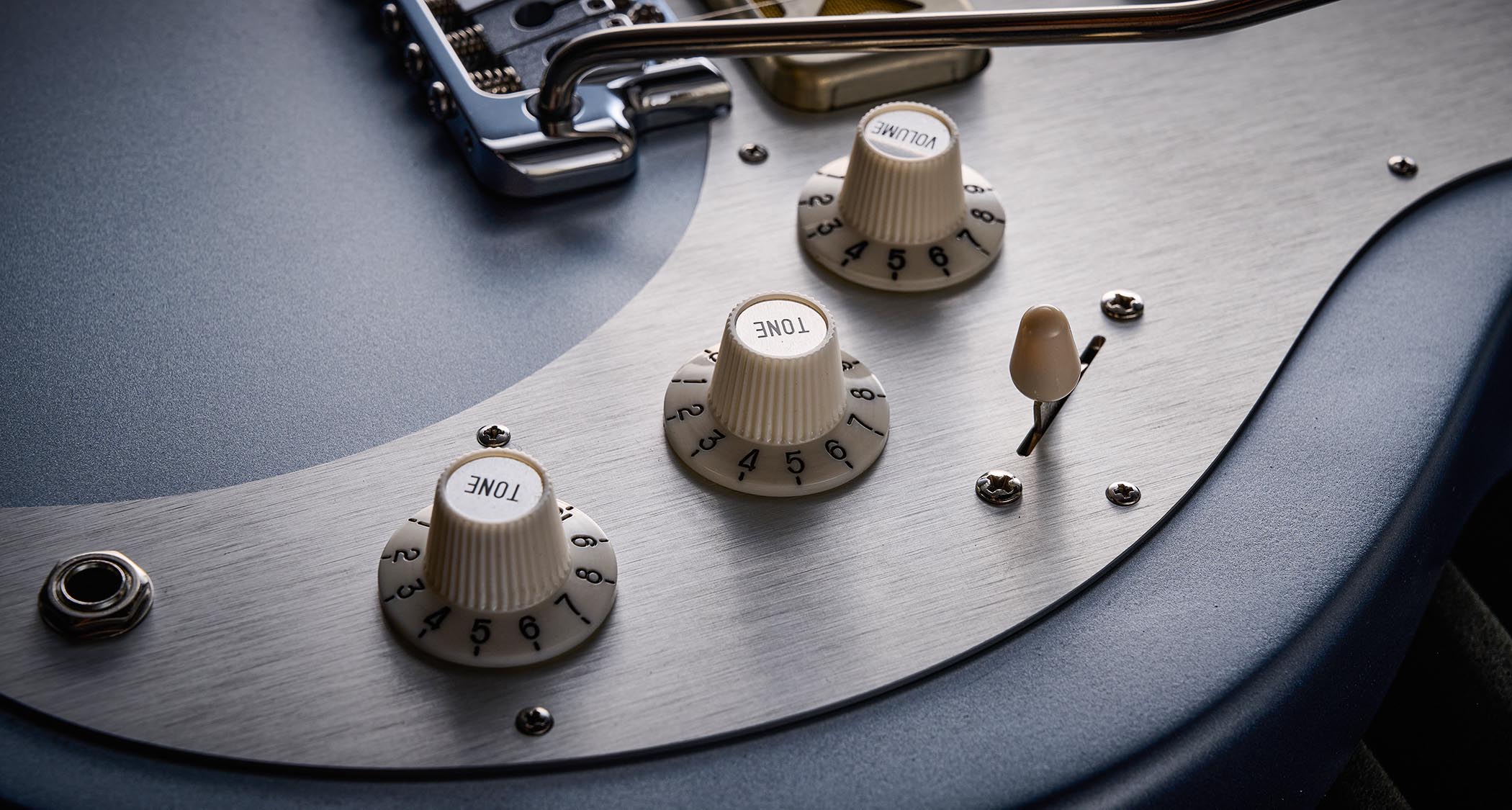
The DC ’62’s scratchplate suspends the neck and bridge single-coil-sized humbuckers, while the soapbar-sized humbucker is direct-mounted again.
You may not have heard of Aumsen hardware – we hadn’t – but a quick call to Trev Wilkinson confirmed they’re a rather good Chinese-based ’shop making a wide range of guitar parts and bridges, including copies of the Wilkinson VS-100 and, as you can see on the DC ’62 here, a version of the PRS SE vibrato bridge including its notched pivot screws. However, unlike that bridge, this one uses a brass block as you’d find on the Core-level vibrato.
The SC’s T-style bridge has quite attractive thicker walls, the side walls slope down to the front, and the three brass saddles are compensated – the outer two also have domed ends just like the ‘bullet’ saddles on Fender’s American Professional II Telecaster. As supplied, it was strung through the body, but you can top-load it, too.
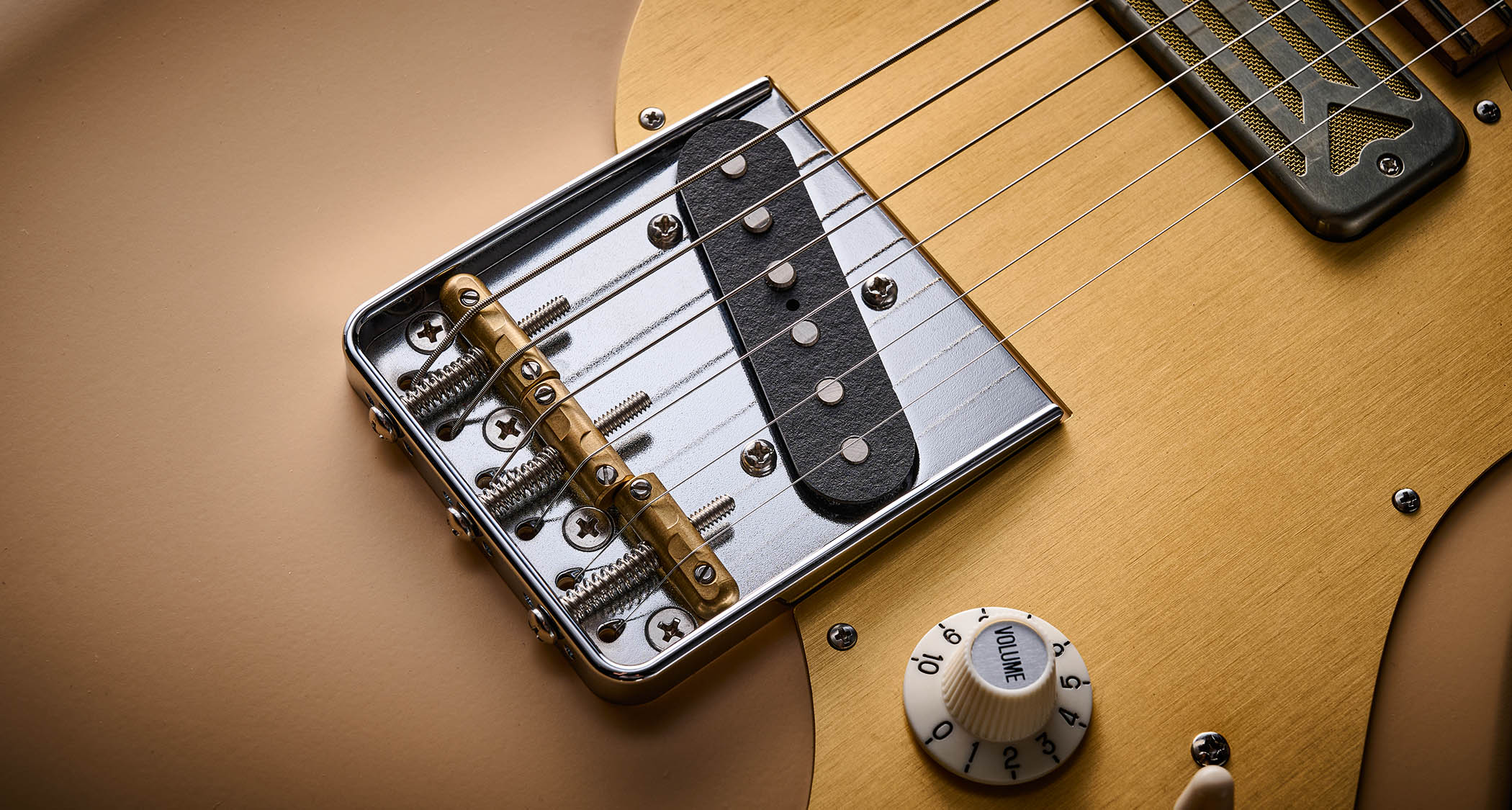
The pickups are also Chinese-made but designed in the UK by Tonerider, who has made quite a name for itself with its affordable, high-quality range. The ‘single coils’ on both models are actually new stacked humbuckers, and the soapbar with its Gold Foil face that’s visible through a very detailed and smartly cut partial cover (designed by Otto) is a side-by-side humbucker.
Both guitars also feature a trio of controls with amp-style skirted knobs: master volume with tones for bridge and neck pickups; the DC ’62 uses a five-way selector for its three pickups and the SC ’52 only needs a three-way switch for its pair.
Aside from the clever original design here, the craft is very sharp. These might be the first electrics Eastman has brought to market under $/£1,000, but there’s nothing ‘cut-price’ about any detail.
Specs
Eastman Fullertone DC '62
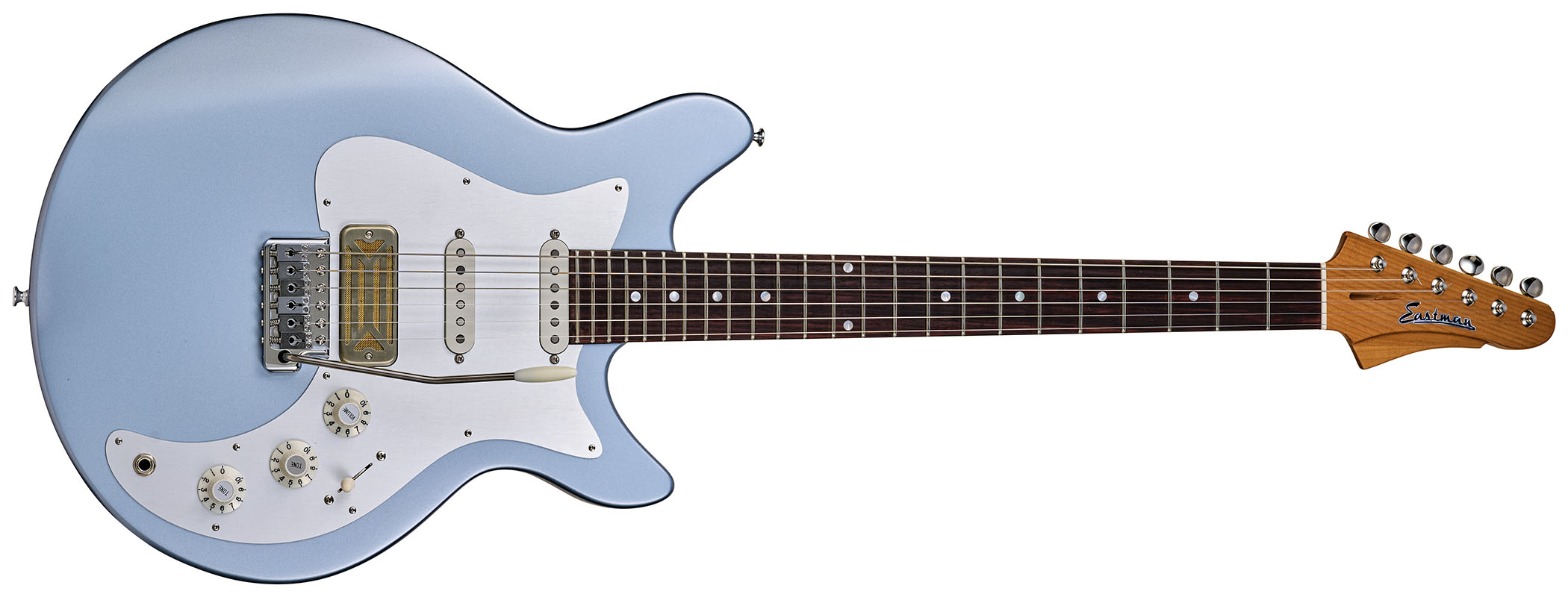
- PRICE: $999/£899 (inc gigbag)
- ORIGIN: China
- TYPE: Offset double-cutaway solidbody electric
- BODY: Roasted black limba
- NECK: Roasted maple, ‘medium round’ profile, ‘2-bolt long tenon’ body join
- SCALE LENGTH: 648mm (25.5”)
- NUT/WIDTH: Bone/43.3mm
- FINGERBOARD: Rosewood, pearl dot inlays, 305mm (12”) radius
- FRETS: 24, medium-jumbo (Jescar FW47104-P)
- HARDWARE: Aumsen 6-post walled vibrato with individual saddles and brass sustain block, unlogo’d Kluson-style tuners – chrome/nickel-plated
- STRING SPACING, BRIDGE: 52.5mm
- ELECTRICS: Tonerider Soapbar Humbucker w/ custom Goldfoil cover (bridge), Tonerider SQ1-WH, staggered Noiseless Singlecoil (middle and neck), 5-way lever pickup selector switch, master volume, individual tone controls for neck and bridge pickups only
- WEIGHT (kg/lb): 3.34/7.35
- LEFT-HANDERS: No
- FINISH: Ice Blue Metallic (as reviewed), Desert Sand, Moss Black – Truetone satin
Eastman Fullertone SC '52
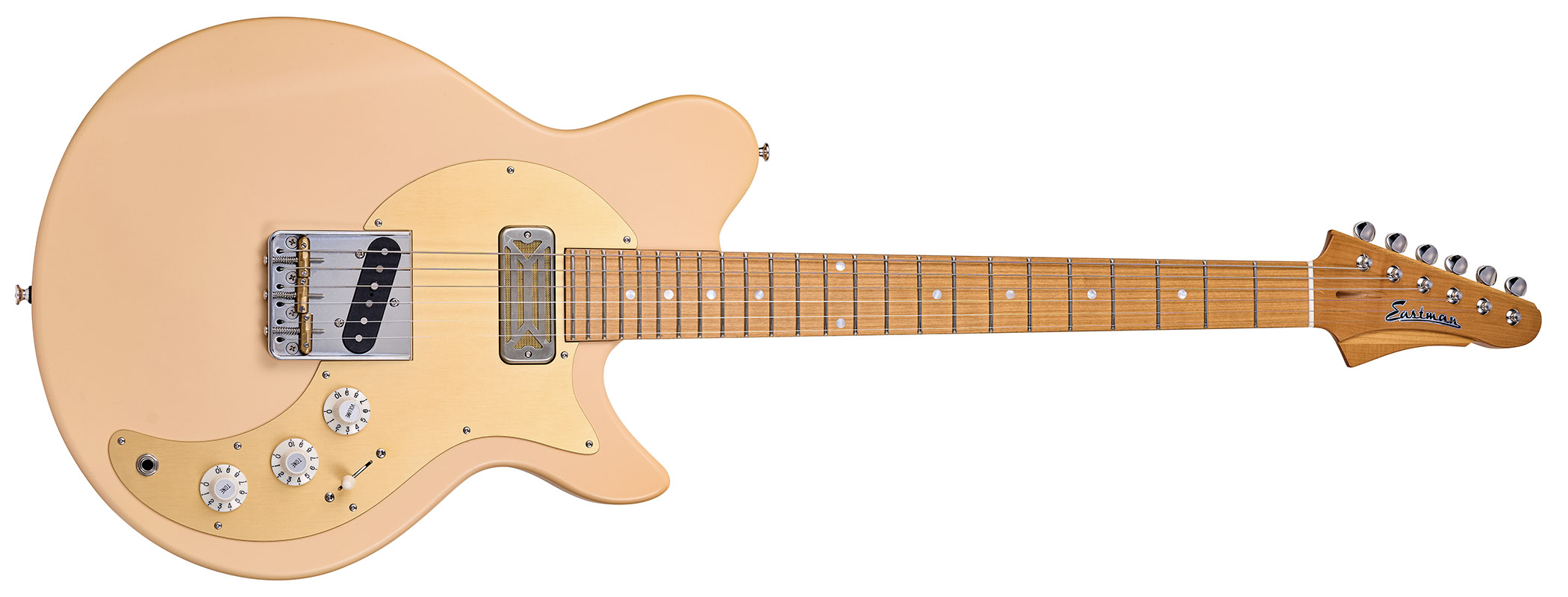
- PRICE: $899/£799 (inc gigbag)
- ORIGIN: China
- TYPE: Offset single-cutaway solidbody electric
- BODY: Roasted black limba
- NECK: Roasted maple, ‘medium round’ profile, ‘2-bolt long tenon’ body join
- SCALE LENGTH: 648mm (25.5”)
- NUT/WIDTH: Bone/36mm
- FINGERBOARD: Roasted maple, pearl dot inlays, 305mm (12”) radius
- FRETS: 24, medium-jumbo (Jescar 47104)
- HARDWARE: Aumsen thick walled bridge with through-body stringing, 3x compensated brass saddle, unlogo’d Kluson-style tuners – chrome/nickel-plated
- STRING SPACING, BRIDGE: 54mm
- ELECTRICS: Tonerider TQ1B-BK staggered pole Noiseless Singlecoil (bridge), Tonerider Soapbar Humbucker w/ custom Goldfoil cover (neck), 3-way lever pickup selector switch, master volume, individual tone controls for neck and bridge pickups only
- WEIGHT (kg/lb): 2.92/6.42
- LEFT-HANDERS: No
- FINISH: Desert Sand (as reviewed), Ice Blue Metallic, Moss Black – Truetone satin
- CONTACT: Eastman Guitars
Playability and sounds
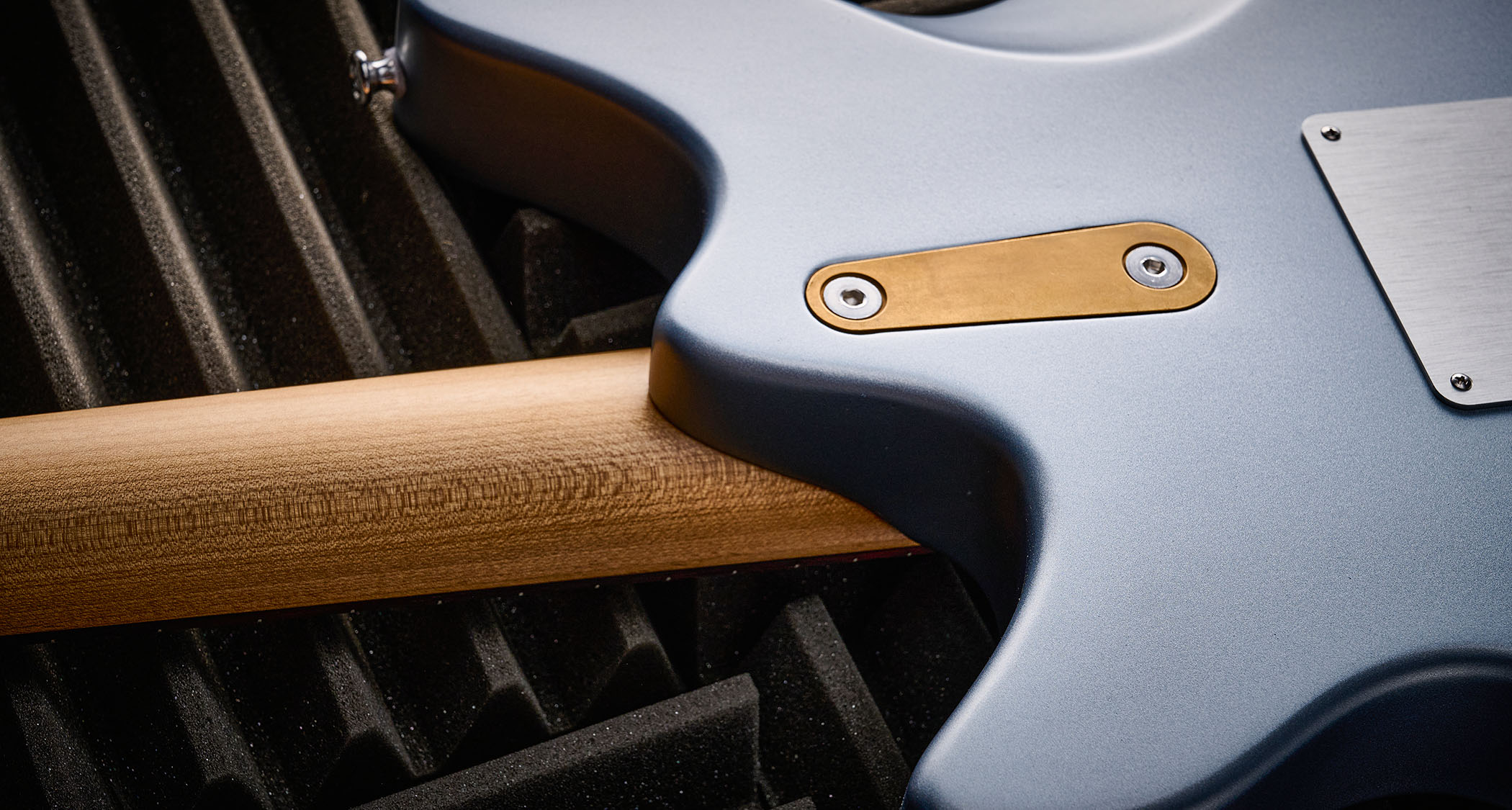
Despite the different outlines, the guitars do feel very similar seated or strapped on due to the similar geometry of the standard strap button positions.
That said, our DC is noticeably heavier, although far from overweight, at 3.34kg (7.35lb); the SC is lighter at 2.92kg (6.42lb). To be picky, the upper-position access is marginally better on the SC with its sloping heel, rather than the more pointed version on the DC, but that’s as much to do with hand position and what you’re used to, and neither is a problem.
As you’d expect, with the same medium round neck shape, 305mm (12-inch) radius fingerboard and medium-jumbo frets, they really feel similar. There’s good fretwork, slightly rolled and in-turning fingerboard edges, and a pretty mainstream setup shipping with D’Addario NYXL strings in 0.010 to 0.046 gauges.
That said, that extremely PRS-esque vibrato seems a little out of place in this sea of originality. Although, to be fair, the D’Ambrosio DC model uses a MannMade PRS-style vibrato; John Mann was an important part of the PRS story helping to create and manufacture the original vibrato used on PRS guitars.
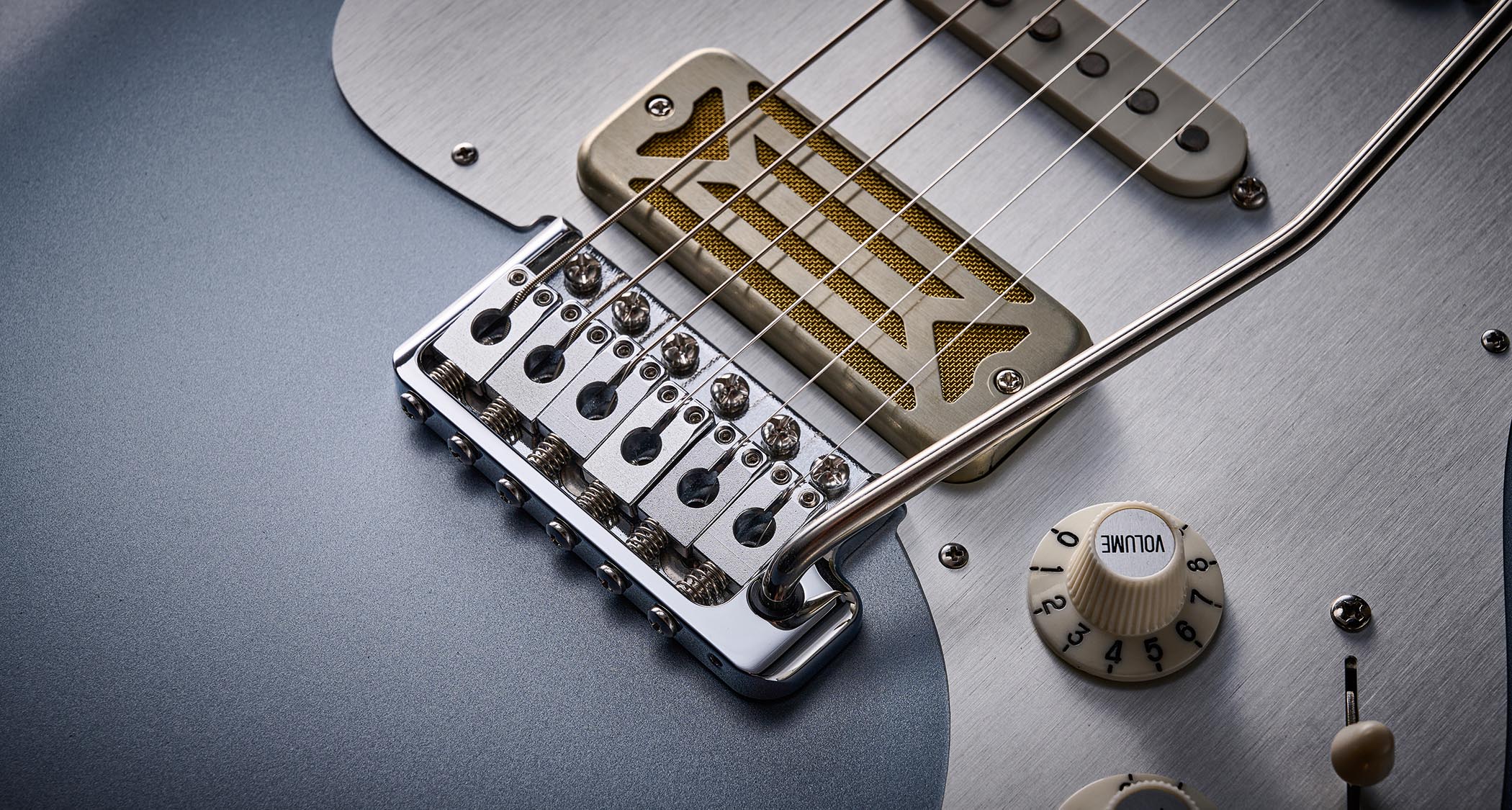
Here, the vibrato doesn’t float above the top as it does on a PRS; it’s screwed flat to the body at the front with very little up-bend, although the limited travel is perfectly good for a shimmer or two. There’s little to criticise with the SC, but those pearl dots on the face of the maple-only fingerboard do tend to disappear in playing position. Just saying!
‘Medium round’ is a pretty accurate description of the neck shape, but it falls into a bigger category than many modern bolt-ons in this price area. The nut width is a shade over 43mm with good 36mm string spacing across the well-cut bone nuts.
We start with a deep C profile in lower positions that measures 22.3mm in depth, and from there we get to a pretty big 25.9mm by the 12th fret. The shaping is well done without over-filling the shoulders, otherwise it really would feel massive.
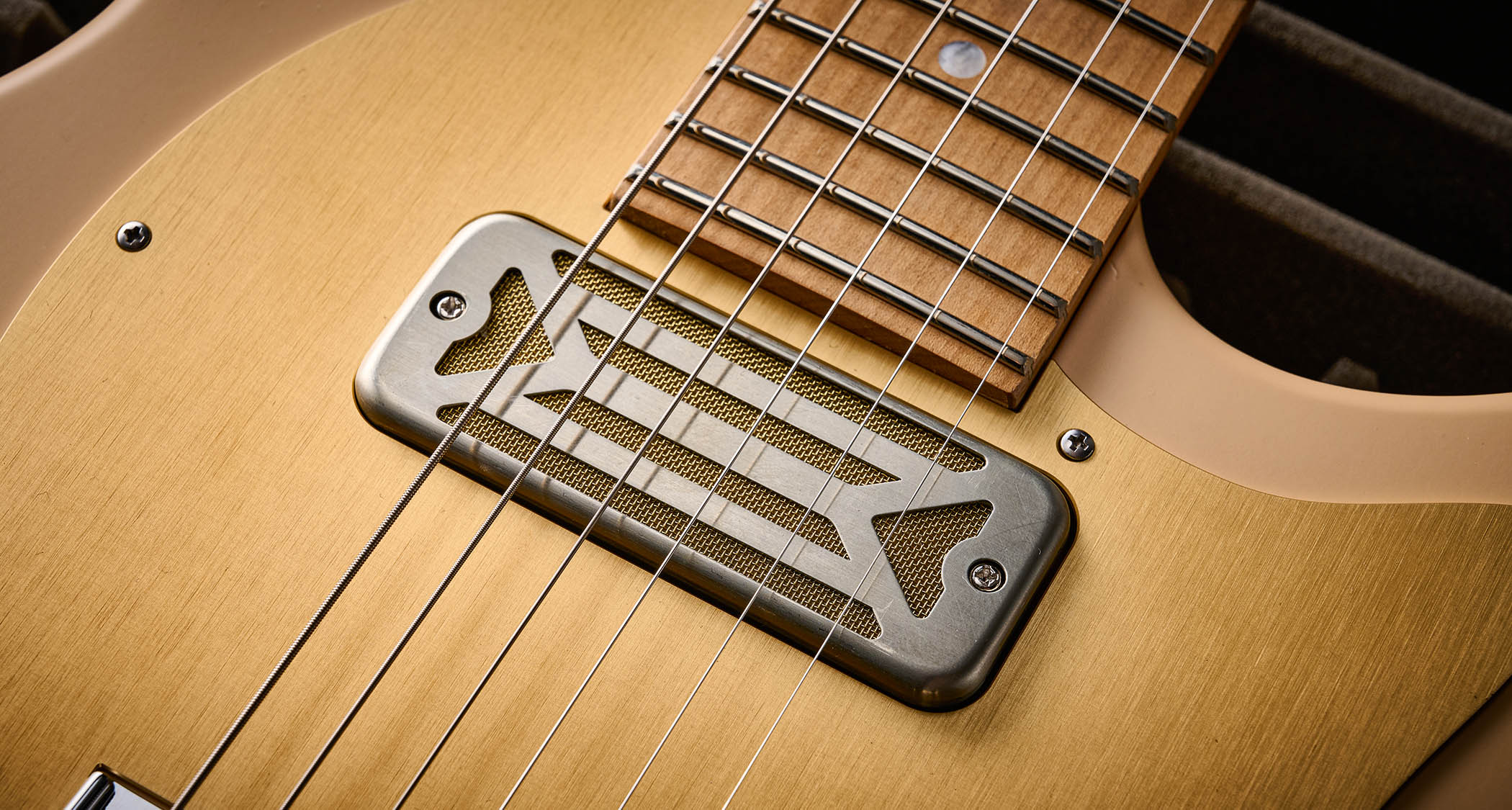
Exactly what the neck joint brings to the table is harder to quantify. Of the two, unplugged, the SC is slightly more alive and slightly crisper sounding than the DC, which is far from an inert lump, but, as we said, they do have different weights.
Comparing these with a few other bolt-ons, well, guitars have a habit of all responding in subtly different fashions, don’t they? If one of your criteria is that a guitar needs to vibrate and feel alive in your hands, then these certainly do.
Plugged in and using a PRS SE Silver Sky to warm up the test amps, the DC ’62 holds its own rather well. There’s slightly less sparkle to the neck, middle and mixes compared with the PRS, but it still shouts ‘Stratocaster’, and these stacked humbuckers really are quiet, a big advantage on those difficult gigs, not to mention if you’re using a dollop or three of gain.
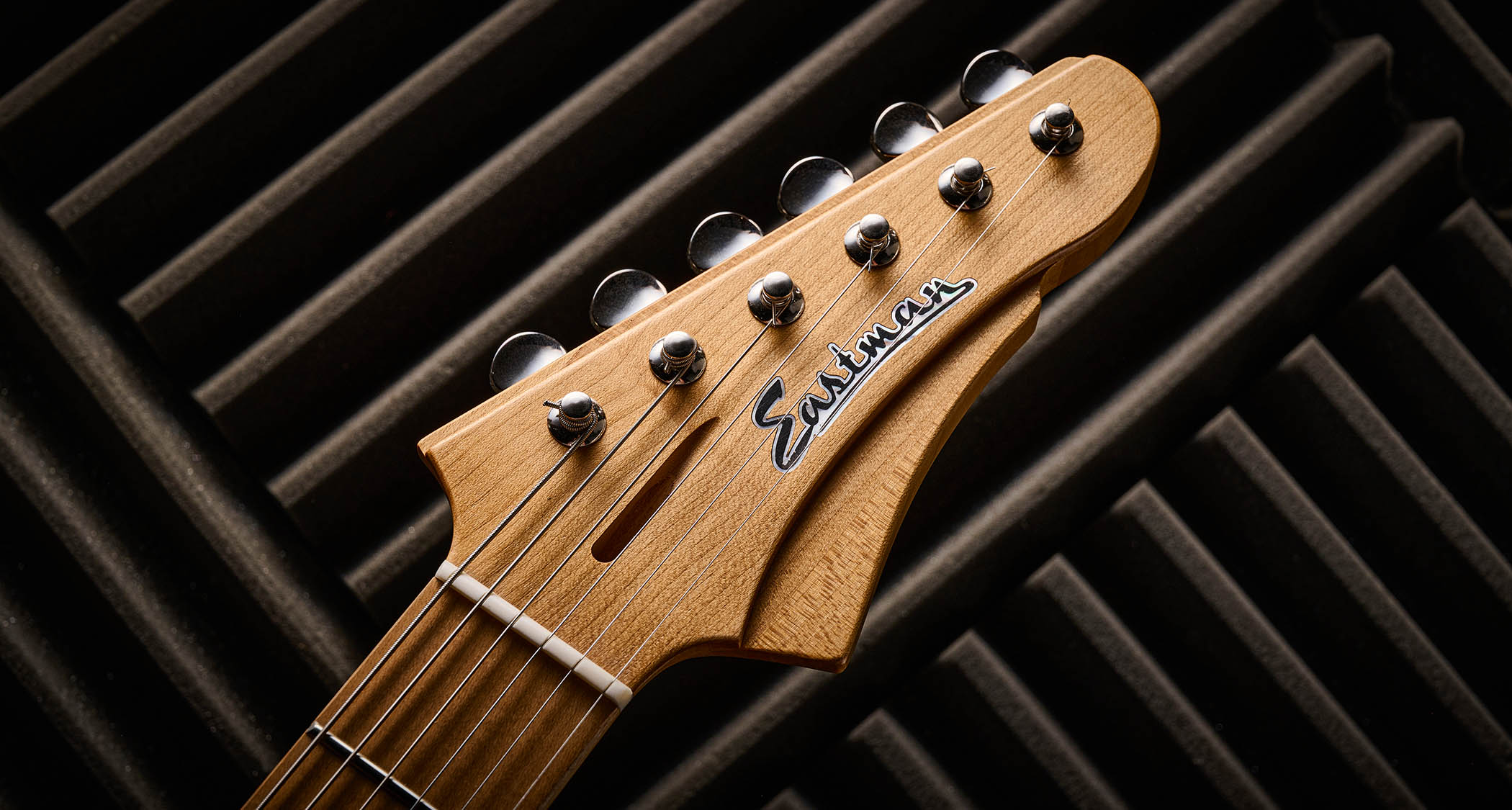
The soapbar-sized humbucker is very nicely voiced, too: it’s got plenty of clarity and really suits the ‘single coil’ character, subtly smoother but far from a ‘rock’ HSS ’bucker. It just gives a little more to that often over-bright/weak Strat bridge position. It’d be great to hear a FullerTone with a pair of these in the bridge and neck positions.
We can, of course, hear the latter on the SC ’52, which is where we start. Sometime later we’re still at it and can only conclude that this guitar might well be a roots-rock masterpiece.
The neck humbucker balances clarity and depth as it should; pull back the volume and there’s an evocative blues/jazz character, a real old sound. But then the band kicks into a country rock tune and the bridge pickup, which isn’t over-hot, jangles and bites.
Roll back the tone and kick in a little level boost and you’re doing your early Patent Applied For voicing rather nicely. Then there’s the pickup mix – the neck is slightly hotter and we left it like that as it’s a pretty classic humbucking ‘Tele’ sound with ring, chime and depth.
What we see, hear and feel doesn’t match the prices we’ve been given. Has someone slipped up?
Verdict
Verdict: ★★★★½
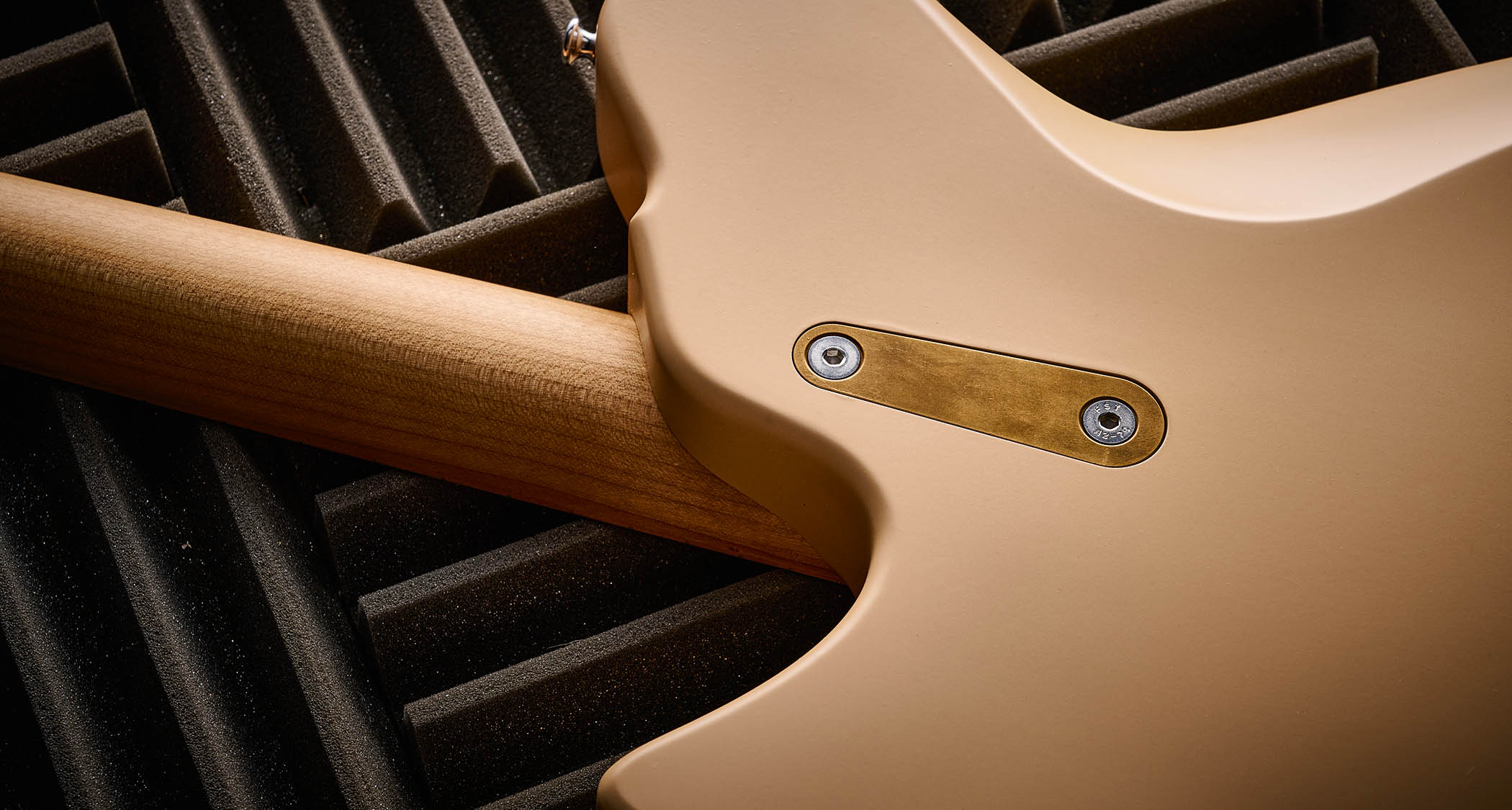
Does the world really need another pair of bolt-ons based on Fender’s finest? We wonder how many times we’ve written that. But a good guitar is a good guitar, right? And these FullerTones are good guitars.
These guitars – especially the SC ’52 – feel and to a certain extent sound like vintage pieces that have already been played in
From the clever design to the stylised finishes, excellent hardware and pickups bundled in with a real old-school big-neck vibe, these guitars – especially the SC ’52 – feel and to a certain extent sound like vintage pieces that have already been played in. And that feel is important to the proposition.
Guitar World verdict: These guitars really come across as a very boutique, artisan pair of instruments, rather than an exercise in hitting a production-line price point. Above all, they’re not just another copycat design. Inspiring craft that won’t break the bank? We’re onboard!
Hands-on videos
The Guitar Geek
The Guitaristas
Philip McKnight
- Eastman E20OOSS/v and E20SS/v review
- This article first appeared in Guitarist. Subscribe and save.







